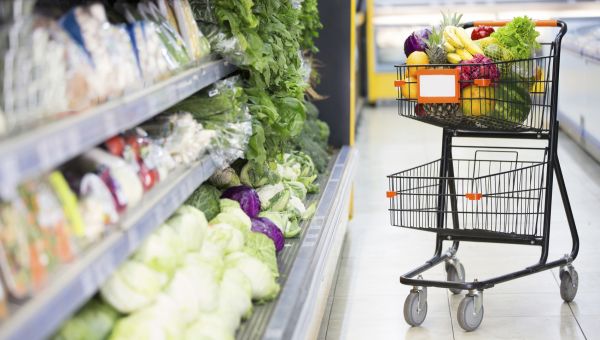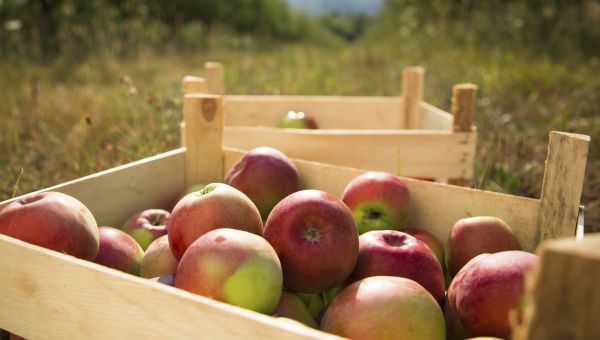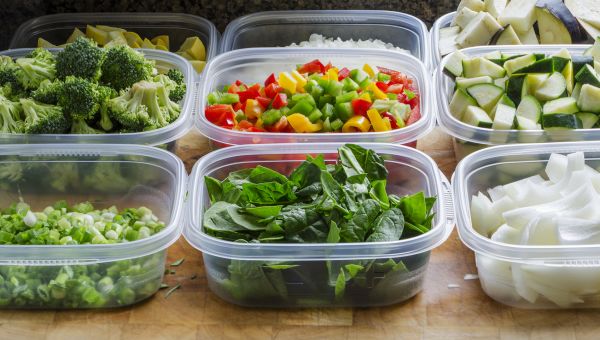7 affordable health food hacks
Eating wholesome, nutritious foods doesn’t have to break your budget.
Updated on September 6, 2023

You want to eat healthy, but when you see a basket full of “all natural” and “organic” items ringing up at the grocery store register, your budget is blown. Sound familiar? You’re not alone.
According to data from the U.S. Department of Agriculture (USDA), even a “thrifty” food plan costs an average of $975.80 per month for a family of four. The highest-cost plan measured by the USDA can run as high as $1583.50 per month. (The USDA’s figures are based on estimates for healthy food and beverages that can be purchased and prepared at home for a household comprising two adults between 20 and 50 years of age and two children aged 6 to 8 and 9 to 11 years.)
Though the costs can add up, nutritious eating can pay off in terms of overall health and well-being. From meal preparation to picking seasonal produce, here are seven simple tips that will help you fuel up healthfully without breaking the bank.

Find veggies and fruit in the freezer and canned food aisles
Frozen and canned vegetables and fruits last longer than fresh produce so they won’t go to waste, and they’re typically more affordable, too. Better still, canned and frozen produce items are packaged right after harvesting, so their nutrients are well-preserved.
Read food labels to avoid canned and frozen products with high-calorie sauces or syrups, saturated fat, added sugar, or added salt. Frozen berries, spinach, and corn, as well as canned tomatoes and beans, are good options to start with.

Get your protein from more than just meat
The meat in your grocery cart may be packed with protein, but it could be adding more cost to your grocery bill—and unhealthy saturated fat to your diet. Animal meat also requires higher feed and transportation expenses than other foods. And studies show that vegetarians and fish-eaters tend to have lower body mass indexes than those who predominantly eat meat.
Protein is the basic building block for every cell in the body, so getting enough protein in your diet is essential. But eating animal meat isn’t the only way to get it.
Consider other healthy protein sources like eggs, low-fat milk, and low-fat yogurt. And try adding plant-based protein sources like tofu, nuts, and beans once or twice a week to your shopping list and see how much you save.

Shop the season
When shopping for fresh produce, buying fruits and vegetables that are in season can save you a bundle. Seasonal produce typically costs less because it’s more likely to come from a local farm rather than one located farther away. The longer and further food is shipped, the more it may cost.
Seasonal fruits and veggies that are picked when they are the freshest and distributed soon after are likely to have more flavor and more nutrients like potassium, vitamin C, and calcium than food shipped from far away. Your local farmer’s market is a fun and easy place to go for in-season produce.

Try the store brand
On average, generic and store-brand grocery items may cost as much as 40 percent less than name-brand items. In most cases, the two products are essentially the same. Like national brands, all store-brand products undergo quality and safety checks before they make their way to grocery store shelves.
Whether it’s a cereal product or a canned vegetable, always compare store-brand and name-brand nutrition labels to make sure the quality and ingredient lists are comparable. If they are, choose the store-brand option to help ease the strain on your wallet.

Meal prep can help you save, too
Preparing your own meals at home can help you make better food choices and save you money. When you cook your own meals, you’re less likely to order more expensive and calorie-heavy takeout or swing through the drive-through at the end of a long day.
Over the weekend, set aside a few hours to plan and prep your meals for the week ahead. Try assembling meal ingredients for things like soups and smoothies in plastic baggies or containers so you can throw them in the pot or blender in a pinch. Make daily snacks and lunches for the week all at once and cook big batches of veggies that can accompany any main dish you have during the week.

Buy in bulk
Public wholesale stores may seem intimidating, but for foods you eat regularly, they may be the best bet for saving money. But before you start loading up your cart at Costco, however, make sure you compare the bulk price per unit with what you normally buy.
It’s easy to get carried away when buying in bulk (and buying more food than you’ll ever reasonably use). But if you stick to pantry staples and foods with a longer shelf-life, you can save some cash and cut down how often you need to go to the grocery store. Bulk shop for items you’ll use up before they expire. Brown rice, oatmeal, natural honey, dried beans, vinegar, and whole-wheat pasta are some of the healthy food items that can stay in your pantry for a while.

Drink more water
Drinking water throughout the day can help you manage your appetite and weight. It also promotes good brain function and helps keep your joints lubricated so you can move about easier. And if you bypass soda, coffee, juice, tea, sports drinks, and other bottled beverages when grocery shopping, opting for H20 instead, you’ll save money, too.
Water is calorie-free, while other beverages may be filled with sugar and empty calories. Add flavor to your water with slices of affordable fresh fruit like limes, berries, and oranges. Need inspiration? Check out these simple ways to drink more water each day.

U.S. Department of Agriculture, Food and Nutrition Service. USDA Food Plans: Monthly Cost of Food Reports. Official USDA Thrifty Food Plan: U.S. Average, July 2023.
U.S. Department of Agriculture, Food and Nutrition Service. USDA Food Plans: Monthly Cost of Food Reports. Official USDA Food Plans: Cost of Food at Home at Three Levels, U.S. Average, July 2023.
Vachon, Pamela. Ever Wonder How Much Cheaper Store-Brand Groceries Are? We Did the Math. CNET. June 22, 2023.
More On


video

article

slideshow


video


video
